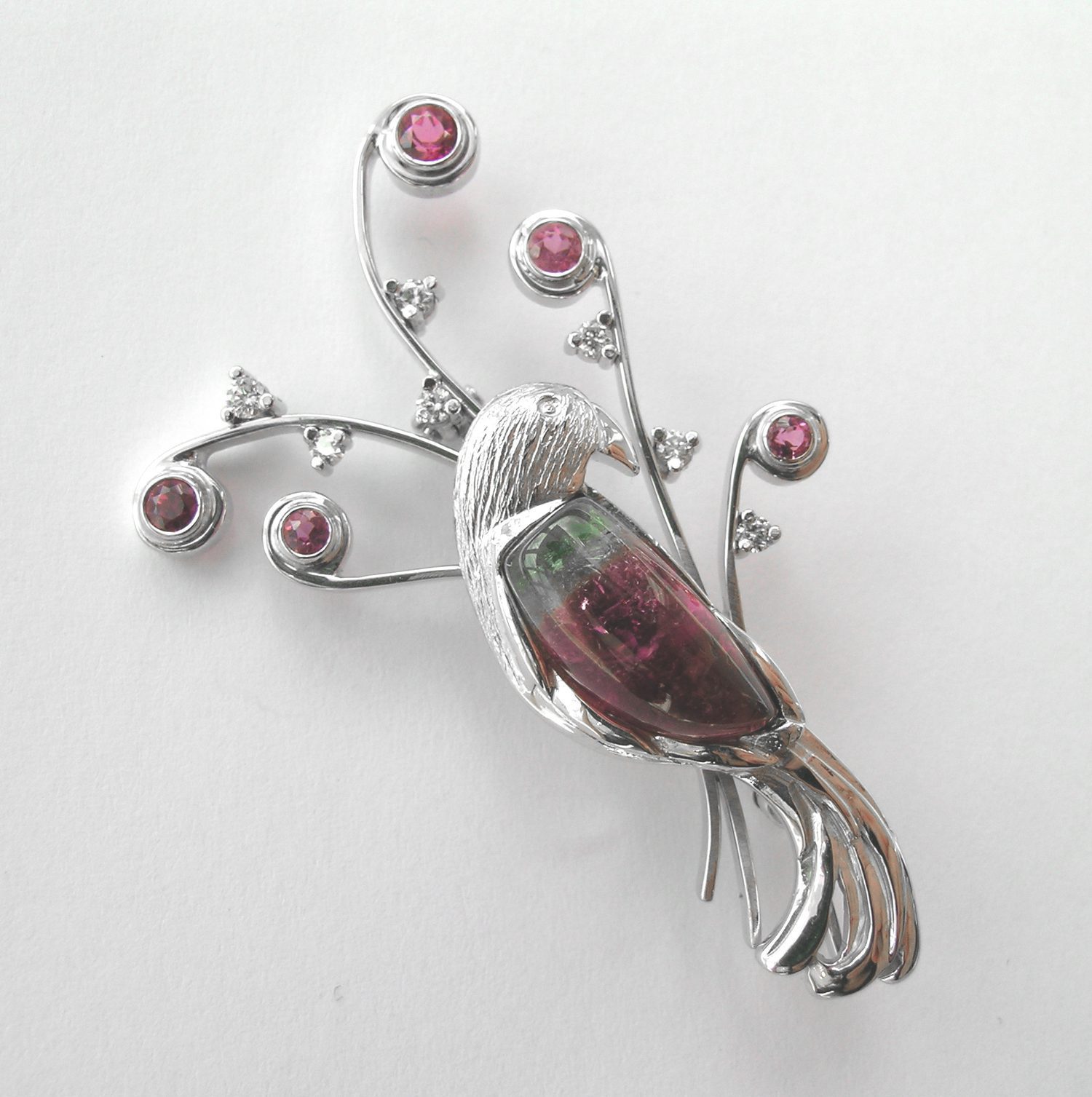How Do Tourmalines Form?
Learn about tourmaline formation, where tourmaline is found, and the unusual geological conditions that give this stone its fantastic colors.
2 Minute Read
What is Tourmaline?
In Sri Lanka, the island famous for its sapphire, chrysoberyl, and so much more gem wealth, turamali is the Sinhalese word for “stone of mixed color.” Indeed, there’s no better way to describe tourmaline. Minerals in the tourmaline group can occur in any color of the rainbow, and jewelers often use them to imitate other gemstones.
In terms of chemistry, tourmalines are sometimes called a “kitchen sink” mineral because of the wide variety of elements they may contain. The basic mineral formula is XY3Z6(T6O18)(BO3)3V3W, where X, Y, Z, T, V, and W could represent different elements. Because of the wide variety of possible substitutions, there is a large and growing list of end-member tourmaline minerals as well as countless intermediate compositions.
Still, relatively few types of tourmaline make nice gemstones. Most tourmalines in jewelry consist of the mineral elbaite. Dravite, uvite, and schorl might also be used as gemstones, though this is less common.
Where is Tourmaline Found?
Tourmalines form in igneous and metamorphic rocks, but most gem-quality tourmaline forms in pegmatites. Pegmatites are igneous rocks that form during the last…
Addison Rice
A geologist, environmental engineer and Caltech graduate, Addison’s interest in the mesmerizing and beautiful results of earth’s geological processes began in her elementary school’s environmental club. When she isn’t writing about gems and minerals, Addison spends winters studying ancient climates in Iceland and summers hiking the Colorado Rockies.
Related Articles
Tourmaline Gem, Price, and Jewelry Information
Faceting Survey Results – Polishing – Tourmaline
Advice For Grading Dark Colored Gemstones
Gemstone Orientation for Beginners
Latest Articles
800 Years of Mogok: A Celebration in Tenuous Times
What is the Average Gemstone Faceting Yield?
Pyroxmangite Value, Price, and Jewelry Information
How to Identify Emerald Simulants and Synthetics
Never Stop Learning
When you join the IGS community, you get trusted diamond & gemstone information when you need it.
Get Gemology Insights
Get started with the International Gem Society’s free guide to gemstone identification. Join our weekly newsletter & get a free copy of the Gem ID Checklist!
